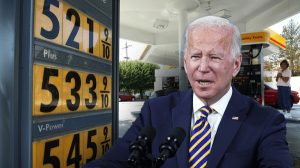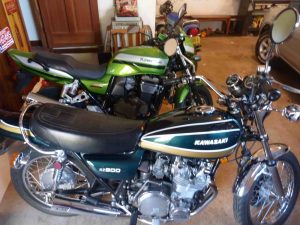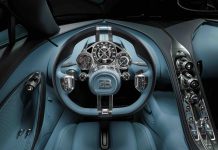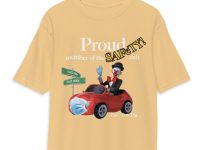Lots of interest in motorcycles now – for practical reasons. They are a way of dealing with the doubling of the price of gas – by doubling or even tripling your gas mileage. Some smaller bikes with engines in the 250 cc range average 90-100 miles-per-gallon. Few bikes – regardless of engine size – average less than 40. Italics to emphasize the point that it’s 40 MPG not just on the highway (as some cars tout) but on average.
Some – like my Honda Silvering, which is a medium-sized (and engined) bike – average about 60. That means a little less than five gallons of gas – which is about a tankful for the Honda – costs about $25. Which is about what it used to cost to just-about fill up the 15 gallon tank of my old pick-up truck – which doesn’t average 60 or even 40 MPG.
So lately, I’ve been riding the bike a lot. You might consider riding rather than driving, too.
But if you haven’t already got a bike – or know a lot about them – there are some things to consider besides how little gas they use. One of these being which type of bike – or rather, which type of cooling – is best.
The truth is, neither is.
But there are differences. Pros – and cons – to each way of controlling and shedding heat that may be of interest, so let’s have a look at some of them.
Air-cooled pros:
The big one is, arguably, fewer parts. With an air-cooled engine, you will never have to worry about a leaky radiator or a burst hose – because there is no radiator and no hoses to burst. Also no thermostat or water pump to fail. You will never have to service systems – or replace parts – the air-cooled bike doesn’t have.
Also, access to the engine is usually much better . . . because there’s no radiator in the way and no hoses to work around. This makes it easier to do basic service and also to clean the engine.
Faster warm-ups. An air-cooled engine will reach operating temperature faster, which is a boon if it’s an older bike with carburetors rather than fuel injection. A cold carbureted (and water-cooled) engine will often need more time on the choke before it settles down to a stable idle and the bike is ready to ride.
The sound. Air-cooled engines are more mechanical-sounding because the sounds of the valvetrain and reciprocating assembly (pistons going up and down, etc.) aren’t muffled by water jackets. The castings (block and heads) are usually thinner for that reason – and also so as to dissipate heat, which there’s no water to do.
Air-Cooled cons:
Less power is probably the main downside of air-cooling.
The more power an engine makes, the more heat it makes. This heat has to be regulated and dissipated in order for the engine to not overheat. It is harder to do this with fins and airflow over them, which – along with oil (and, sometimes, oil coolers) is how air-cooled engines regulate and dissipate heat. But they do run hotter – and it is harder to cool them, the more powerful they are. This is why most sport bike engines making more than about 100 horsepower are water-cooled.
It is also why, if you modify an air-cooled engine to make more power, you will want to consider adding an oil cooler, if the bike’s engine hasn’t already got one – to increase the capacity of the engine to dissipate the additional hear it will make. You will also want to be careful about prolonged idling – as in heavy traffic – of such an engine on a very hot day – when there’s very little air flowing over the engine.
Fins. Most air-cooled engines have fins cast into them to cool them. The engine’s heat migrates outward to these fins, over and through which cooling air flows, taking away the heat. They are simple – no moving parts – and look neat – but can be Hell to keep clean. Which is important to do and not just for looks, because as grease and dirt accumulate in between the fins, cooling efficiency goes down and the hotter the engine will run. But getting at all those nooks and crannies – and getting out all the grease and grime – can be a lot of work.
How about water-cooling?
The pros:
The main one is power. A water-cooled engine can make more of that because it has an additional medium to transfer heat.
Both air and water-cooled engines rely on oil for both lubrication and heat dissipation. But water-cooled bikes add . . . water (well, a mix of water and ethylene glycol) to the mix. This greatly increases the capacity to carry away and dissipate the heat produced by the engine in the process of producing power. There are not many air-cooled motorcycle engines that made even 100 horsepower. My ’70s-era Kawasaki 900 was the most powerful bike of its era and its engine produced about 82 horsepower. Modern sport bikes with engines in the same “liter” class routinely boast in excess of 120 horsepower and some of the bigger ones close to 200.
A water-cooled engine not only runs cooler it also runs a more consistent temperature. It is possible to regulate the engine’s operating temp using the thermostat and fan to maintain the same temperature, by increasing (or decreasing) the cooling. This is why you won’t see a water-cooled bike’s temp gauge ranging much, once the engine is warmed up – assuming the cooling system is operating properly.
No fins. Some water-cooled bike engines do have vestigial fins cast into the heads – chiefly for aesthetics (see that part above about looking good) and maybe a little for supplementary cooling. But they are not as deep (usually) and not as many and so it is much easier to keep the engine clean, which looks good.
And the cons?
We’ve already gone over the main ones – which are the same ones described under air-cooled pros, except in reverse. Water-cooled engines are more complex, having more parts – and are usually harder to work on, because some of those parts are in the way of getting your hands (and tools) on the engine. You will also have the possibility of overheating caused by leaking – or because a thermostat got stuck or a water pump failed. You’ll be doing more maintenance to prevent such problems from happening.
Regardless of which form of engine-cooling you decide works best for you, one thing that’s for sure is you’ll be paying a third to half as much for gas when you ride rather than drive.
Plus, you’ll be riding rather than driving.
It’s a two-fer that’s also a good way to stick it to the Biden Thing. Flip him the bird as you fly by.
. . .
Got a question about cars, bikes or anything else? Click on the “ask Eric” link and send ’em in! Or email me directly at EPeters952@yahoo.com if the @!** “ask Eric” button doesn’t work!
If you like what you’ve found here please consider supporting EPautos.
We depend on you to keep the wheels turning!
Our donate button is here.
If you prefer not to use PayPal, our mailing address is:
EPautos
721 Hummingbird Lane SE
Copper Hill, VA 24079
PS: Get an EPautos magnet or sticker or coaster in return for a $20 or more one-time donation or a $10 or more monthly recurring donation. (Please be sure to tell us you want a magnet or sticker or coaster – and also, provide an address, so we know where to mail the thing!)
My eBook about car buying (new and used) is also available for your favorite price – free! Click here. If that fails, email me at EPeters952@yahoo.com and I will send you a copy directly!












Forgive me if I’m late to the party, as I just discovered this blog for which I have an “identity affinity.”
After 53 years of motersickeling, and having owned and maintained a vast number of bikes over the years (except no BMW’s or Harley’s, because I did not want their brand identity staining my actual persona; besides, eagles don’t flock), I have decided to go back to my roots.
Air-cooled roots borne from a gaggle of Brit iron and old Jap wheels before power and global climate guilt became a thing.
The last 15 years I’ve owned a fleet of V-Strom DL650’s for my now-retired motorcycling tour company in the DR. Now those are great bikes, if economy & dependability are meaningful things to you. I’d call it the Swiss Army Knife of bikes, does nothing great but everything admirably, but butt-ugly, more like a loyal, homely, loving wife who wins blue ribbons for cooking at the State Fair.
But now I’m going to buy an Italian paramour—with a good reputation—a Moto Guzzi V85TT. Not a weakling, not too much power, not particularly spendy, not heavy for the displacement, with a simp 850cc air-cooled moter & shaft drive (!), and mature, retro curves for miles.
Prolly my last bike.
That said, I will also pull the trigger on a TW200 as an “emergency” go-anywhere little bike, sturdy enough for the rough stuff escaping the jack-boots, and fast enough to bypass the Zombie Apocalypse. There is something about that fat rear tire that speaks to me…
(Do you know why Lucas vacuum cleaners are so highly rated? Because if it’s Lucas, you know it sucks.)
Good read, thanks. I’ve been riding since my first mini-bike at 8 years old. My first real motorcycle was a Honda SL 350. Took a few years off to raise a family but went right back.
Thanks, Dave!
I own both types – and each has its merits. I love the character of my ancient Kz900 – and the power of my modern one!
Good explanation of the pros and cons Eric. Both liquid cooled bikes that I bought used had issues – one a burst hose (under the carbs; major PITA), the other a bad thermostat. No problems since. Definitely something to be said for simplicity.
My 2017 Suzuki SV650 gets around 60 mpg. My 2005 ST1300 low 40s. Let’s go Brandon!
A little off topic here, but did anyone see the blatant example of government stupidity in NYC a few days ago? Mayor Eric Adams waved a checkered flag allowing a Caterpillar bulldozer to crush 100 illegal seized street bikes, dirt bikes, and ATVs. The NYPD impounded them from pack riders on the NYC streets. But rather than sell them or something smart like that, they decided to destroy them. Yeah, THAT will keep people from riding on the streets! Again, blame the instrument, not the user. Just like gun “buybacks.”
I’ve got three bikes and no car here in the Pacific Northwest. Two are water cooled, and one is a Ural sidecar air cooled bike that has pretty crappy fuel mileage actually. Maybe because it puts out 40hp and has a solid metal sidecar and frame to haul around. I figure I get around 40 mpg on that thing. However, I can do all my own maintenance on the primitive beast and with the sidecar I can haul 2×4’s home from Home Depot if I want, go shopping, or pack it full of camping gear. It actually has a locking rear differential for solid 2wd and runs logging trails and snow like an ATV. It’s truly a four season beast and I love riding around stuck cars in the snow
My WR250R however is a fuel sipping hooligan masterpiece.
I couldn’t care less what gas prices do. If they triple, I will happily ride the WR as I always do and smile all the way there and home.
Hi Rodrigo,
I ride as often as I can – for the same reasons you do. I currently have four bikes, including the ’83 Honda GL^50 – which is the most practical of the bunch as it has hard bags and a fairing. Getting 60 MPG however I ride it is a perk!
My ol’ Sportster is great on the road but I always got nervous in stop n go traffic or never ending redlights bc of overheating. Not uncommon to see hogs on the side of the road cooling down (masquerading as a smoke break)
“Gravity gets you home”. The 04 Harley, carb no fuel pump, gravity fed gas. If the ignition worked it would run, air cooled as well, no oil cooler needed.
The current 18 Harley, fuel injected, oil cooled heads which adds oil plumbing and an oil cooler up front as a debris catcher as well. A joy to ride, starts and runs perfect but in the back of my mind is hoping all those electronic gizmos and related connectors don’t fail me out in the back road areas – out of cell coverage! Also hoping the oil cooler doesn’t catch a sharp rock.
Have an 18 Road King. Did experience some cooling problems in very slow traffic. Installed a Harley cooling fan that goes just behind the cooler. Easy install. They rape you twice for the fan at $349 and as added sadism you have to have it “turned on” at the dealer… extra $100. BUT,,, so far, no more heat problems. Oh, these come standard with the police versions.
I may be wrong, I was once before, but were SAABs not at one time two cycle air cooled cars? Routinely getting 50+ mpg? Of course earlier VWs were air cooled.
There’s a serious conflict between total computer controlled engines and air cooling. Since air cooling does not provide constant engine temp.
Once upon a time, several decades ago, the plumbing contractor I worked for had to rent a backhoe to abide conflicting schedule. Which I was the one required to use. It was a Deutz. An air cooled diesel engine. Which you could work for 8 hours, and still pull out the crankcase dip stick, and hold the business end in your bare hand. I don’t recall any design details at this late date, and have no idea how it was kept running so cool in spite of a backhoe spending a lot of time not moving while the engine works its ass off. I can only assume it involved a very high velocity fan. Which is only one failure point, compared to several for a water cooled system.
Yes, John, I recall ads in farm magazines for air-cooled Deutz tractors. They had a big fan and ducting to blow air across the engine:
https://tractors.fandom.com/wiki/Deutz_AG?file=Deutz_3-cylinder_diesel_exchange_unit_at_SED_09_-_IMG_8157.jpg
My big mower has a liquid-cooled 3-cylinder Kubota diesel. It’s a great little engine, but the electric radiator fan has failed twice, and I suspect it will again. They can’t seem to come up with a good way of attaching the fan to the motor shaft. Not sure why they didn’t stick with old-school and drive the fan with the belt that runs the water pump and alternator.
They still make some models air-cooled, approx. 50-150HP. We used them on some equipment. The only reason I wasn’t a big fan because they were pretty loud compared to air-cooled versions, because of the fan. I doubt they meet new Tier4 emission requirements, so I don’t know how they are allowed to sell them, maybe as replacements? Or maybe it’s for everyone else but us nuts in the US.
I recently learned that below 25HP, Tier4 does not require the filter/urea stuff, and why I bought a 25HP tractor.
Yes, Chris, I was fortunate to get a 48-HP 2013 Deere that I believe was one of the last models that size to be produced before the new regs took effect. The exhaust comes out the turbocharger and through a simple muffler the way God intended it.
‘Stick it to the Biden Thing. Flip him the bird as you fly by.’ — eric
Suck on this, “Joe”:
‘Ukrainian forces fighting in the eastern city of Sievierodonetsk will retreat from the city, the local governor said on Friday.
‘The fall of the ruined industrial city on the east bank of the Siversky Donets River meant that Russia could fully concentrate its forces on taking its twin city on the west bank of the river, Lysychansk, the last pocket of land in Luhansk Province under the control of the Ukrainian government.’ — NYT
https://archive.ph/vlx11#selection-747.0-747.295
Victory in Vietghanistan, comrades! /sarc